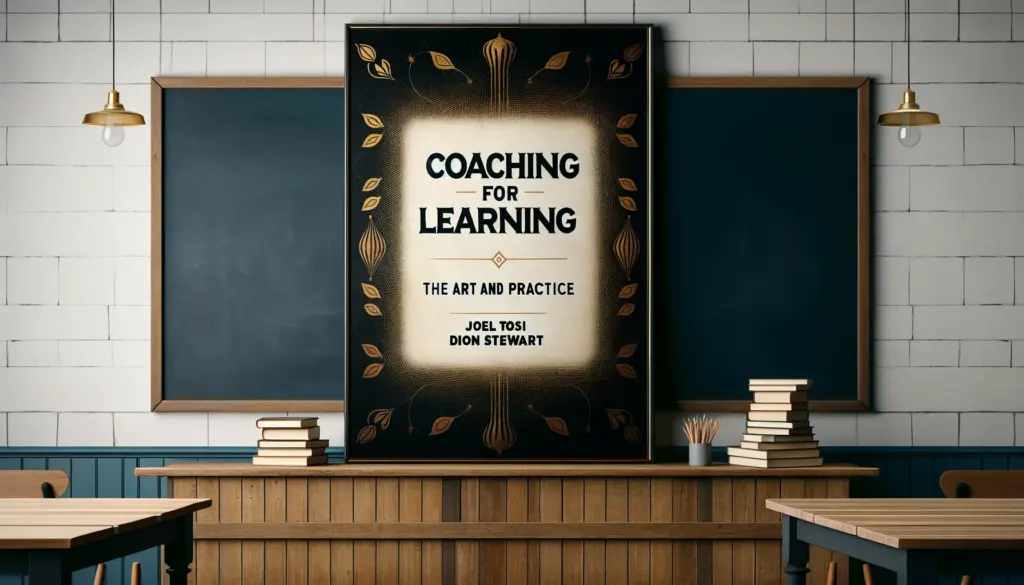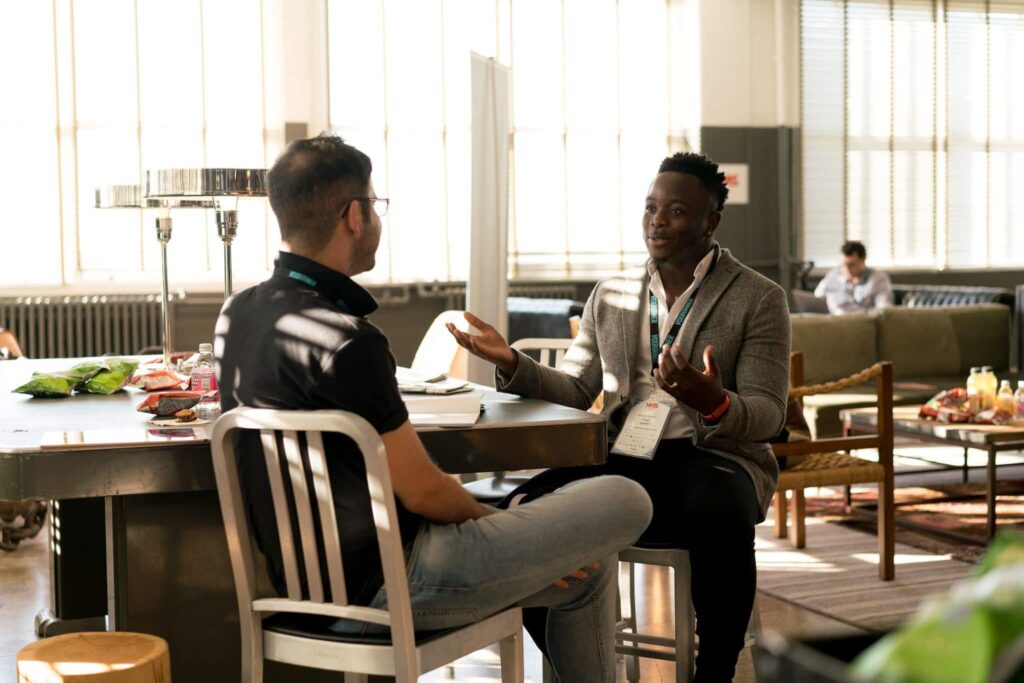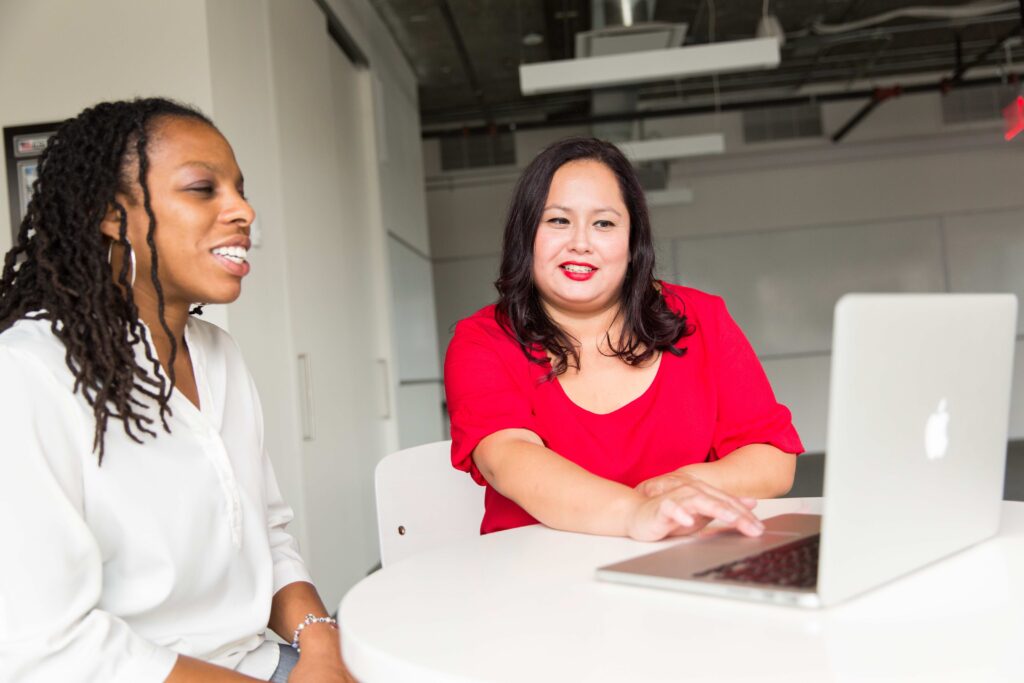Nazhat Salim, Talent Development Specialist at Credit Karma, shares how the Talent Development team was created and continues to evolve Credit Karma University. A centralized learning program that includes classroom teaching, mentoring and coaching, the goal is to empower the organization and equip teams and individuals with the knowledge and tools they need — not just to do their job but to help others do theirs as well.
Building a centralized learning program
The idea for Credit Karma University (CKU) came about from a need to have a centralized and easily accessible learning program. The goal is to help our employees learn, connect, and create, and to build out a formal program that will help them develop faster at Credit Karma than they would anywhere else. Previously, different Credit Karma teams had been organizing one-off training sessions without being able to create any kind of scale or broad dissemination of the content. CKU was developed to address any gaps that were coming up and to prepare teams for upcoming initiatives.
“For example,” says Nazhat Salim, part of the team behind CKU, “we realized that there was a big issue around time and project management and specifically that people were wasting a lot of time in ineffective meetings. So, we ended up having a class on how to run an effective meeting to ensure that people could come together and really solve the issues that they were facing and would come away from the meeting with what they needed.”
“We’ll come up with a list of different classes that we think will solve for these challenges that we’re seeing, and then we’ll go and find people that we think can teach the class. Then, we’ll spend a few months working with them to actually build out these classes, we’ll do the first run through and then we’ll open up our marketing.”
“At the beginning of each term, we have an open house, where employees learn about the different classes, speak to instructors and sign up early. Afterward, we open online enrollment and manage the logistics of the program such as sending out calendar invites, prepping materials, etc. Soon after, the classes begin and we encourage instructors to refine and iterate based on the feedback we receive from students. Then we go through the whole process again! It’s three times a year.”
Planning the content
The CKU curriculum is made up of core classes in addition to classes that address new opportunities that have been identified over the previous few months.
“For example, in the winter term, we’re going to offer a class around effective presentation decks. In the summer, we’ll do a class on public speaking and in the fall, we’ll do a class on storytelling. The goal is to give the participants the different puzzle pieces they need to build it all up into a whole.”
To identify new needs and training topics, Salim and the team spend time listening to their users and observing the context they are working in. They talk to the different department heads and find out what shifts are happening in the business, and work to understand the challenges they are seeing.
“For example, this past year, we were moving from PHP to Scala — so we rolled out a training on that. ”
With the Scala course, to take this as an example, before CKU, an external vendor would have been brought in to design the courses. However, the team found that external vendors don’t have the same insight and context as employees and so CKU is now taking general best practices and training content and making it more specific to Credit Karma, in a new introductory class as well as an advanced version of the training. All of the technical content for 2018 is being built by Credit Karma’s own engineers.
“I think one of the great things about Credit Karma is that people are always willing to help each other. There isn’t this mentality of, ‘I’ll only focus on myself.’ People realize that if you are helping the larger team, the company at large, then you are helping yourself — because people are more proactive, more efficient and can solve problems for themselves. Hopefully, that continues and people continue saying yes when we ask them to get involved.”
“I think it’s also exciting for people to get the chance to do something a little different. It’s one thing to be coding all day, it’s another to be able to share your passion and your expertise about that job. That really reinforces the knowledge and learning for you too.”
Developing the training
When developing a new training, there will be a series of meetings, usually around five in total.
First, the kick-off meeting, during which the team talks through how the process will work.
“I always tell them: ‘You’re the subject matter expert. You’re going to be driving the content — think of me as your consultant. I’ll come in with the adult learning perspective, best practices, and principles.’ The goal is to empower the instructors to drive this themselves while giving them more structure and making sure that they don’t feel overwhelmed by it all.”
“After the kick-off meeting, the first design meeting is really focused on understanding: What is their background on this topic? What excites them about it? What do they think people really do need to walk away with in order to get started or to get to the next level? From there, we break it down into if somebody took this class, what are the three things that they should know, or do, or think differently about?”
“Once we have those outcomes, those learning objectives, then we’ll build backward from there. So, we’ll start with a basic outline: ‘If we want them to do these three things, then we’ll need to make sure that we touch on X, Y, Z.’ From there, the next step is to flesh it out bit more and start to create those materials. Then we refine and then we do the run-through, and the next thing you know, they’re teaching it and again refining it!”
“My vision for CKU is that in the next few years, it’s running on its own. We will enable and empower rather than own. We hope employees will know how to get started, know what to measure for and can see what success is on their own.”
“I’m starting to see it already with the ‘lunch and learns’, where before I was much more involved in terms of not only getting them set up but also helping get people prepared right up to the presentation point; and I feel like now people have the different pieces of what goes into the presentation. Now I’m focusing on how I can make sure that somebody is asking the right questions; that they’re not just offering a training because it sounds interesting or it seems like a fun topic but they’re really making sure that they’re solving for a business need, the right need and with the right sort of training.”
“I also want them to recognize that the people who are in the classroom with them will respond in a way that shows them whether it’s sticking with them or there’s something getting in the way still.”
Empowering the organization
Salim’s vision is to be able to offer more ‘just-in-time’ classes. Rather than planning standard classes that are locked before the start of term, this would mean being able to spot problems as they crop up, create a solution and go and build it right away.
This would mean that if someone in marketing, for example, was getting a lot of questions on a particular topic, they would see that there was a need for a training here. They could create a training program for their peers to solve that issue in a more scalable way than just answering questions on a one-to-one basis.
In a recent case, one of the engineering managers who had a very new team recognized that he would need to get his team ramped up very quickly. So, he created his own onboarding program for new engineers, with mini-sessions on important technologies to get them up to speed. Now, this has been expanded to include all new hires.
“We originally started CKU because we were seeing people teaching each other. We see this hunger to keep learning and this curiosity. A lot of that is now focused on the classroom but we know that teaching in the classroom is a very small percentage of how people actually learn. I want to take that learning out of the classroom and give people the tools they need to teach each other on the fly.”
“A simple idea would be having environmental triggers. Say you are waiting in line for coffee and there is some sort of prompt there for you to get thinking about a question or just to ‘learn quick’. We started to do this with our content on effective feedback. We created little posters and put them on the doors in the big conference rooms. Often, meetings will run over and you’re just staring at the door — so why not stare at this poster that teaches you how to give feedback!”
Salim has the same approach to other areas of CKU, including the mentorship program. Her goal is not to force people to go through CKU in order to mentor somebody but rather to provide that option if you’re new to mentorship and want some ways to get started, some structure. Ultimately, you should have the tools to be able to go out there and mentor someone on your own. The same goes for coaching: the team is offering coaching classes but Salim hopes that this kind of coaching will simply become an embedded part of the culture.
This idea of engaging and empowering the organization to create their own training content and solutions is something that Salim really believes in.
“I think it shouldn’t be the role of the learning and development team to just deliver training sessions but rather to empower the change. Make sure that the environment is receptive to the learning that you’re trying to put out there and make sure that employees are the ones who are enacting that change. They are the ones who are fueling it and you’re like the electricity underneath it, you’re guiding them and making sure that there’s nothing getting in the way of that learning.”
Measuring success
The CKU team uses surveys after classroom training and mentorships to questions around the pacing, the clarity of the information, whether or not expectations were met, and so on.
“What we really look for is two things: ‘Do you feel this has increased your capacity to do your job more effectively?’ And, ‘do you feel prepared to apply the learning?’ If people can answer those two questions with a ‘yes, I can do my job better’ and ‘yes, I feel like I’m able to apply this learning now’ — we consider that a success.”
The team is following up with employees three months after they did the training, to check in and see if they have, in fact, applied the learning.
“We sent this follow-up survey out a few months ago for the first time and 83% of our users said that, yes, they had applied the learning and it made a change for them. So we feel like we are solving for the right things and we are giving people tools that they can use in their work.”
The team also looks at how attractive their offering is, checking how many classroom seats have been filled by the end of the term. In their inaugural term, for example, they filled 71% of the seats, with a total of 195 students. In the past summer term, they filled 95% of the seats with 414 students participating. Looking at the survey feedback, the lowest score received was an 8 out of 10 and the highest was a 9.6.
Salim is particularly proud of the level of interest in the program, the thirst for learning and the willingness to get involved, despite busy schedules and heavy work plans.
“Seeing that people get meaning out of it or that it’s making a really positive change in their world — that keeps me going.”
The next step will be to re-apply these approaches beyond the San Francisco headquarters to empower other offices to see the same kind of success locally.







